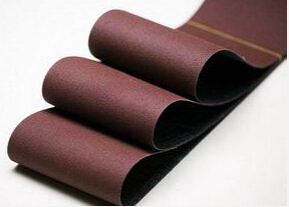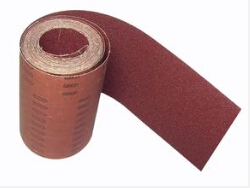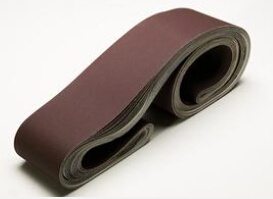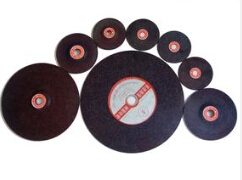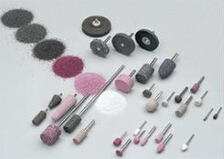Production & Application of Silicon Carbide
Zhongsen Editor 2018-05-22 Silicon carbide (SiC) is mainly made of quartz sand, petroleum coke(coal coke) and sawdust as the raw material under high temperature electric resistance furnace smelting. SIC has many uses in addition to abrasives because of its stable chemical properties, high thermal conductivity, low coefficient of thermal expansion and good wear resistance,
Low-grade silicon carbide (about 85%SiC) is an excellent deoxidizer, which can accelerate the speed of steel making and facilitate the control of chemical composition and improve the quality of steel. In addition, silicon carbide is also widely used in the production of electric heating element silicon carbon rods.
Silicon carbide has two crystal forms: β-sic is an equiaxed system similar to sphalerite structure; α-sic is a hexagonal system with a dense array of crystals. The β-sic will be converted to silicon carbide at about 2100°C.
The formation of silicon carbide.
Synthesis of silicon carbide with silica and carbon (coal)
Reaction formula:Si02+3C→SiC+2CO
It mixed by mixing machine, it’s moisture content is controlled from 2% to 3% and the mixed bulk density was 1.4 to 1.6 g/cm3. The charging sequence is firstly to lay a layer of unreacted material on the bottom of the furnace, secondly add new ingredients to a certain height (about half of the furnace core to the bottom of the furnace), lay a layer of amorphous material on it, and then continue to add ingredients to the core level finally.
After the furnace is installed, it can be energized and synthesized to control the reaction process with current and voltage strength. When the temperature of the furnace rises to 1500°C, β-SiC begins to form. It will convert to α-SiC start from 2100°C and convert to α-SiC at 2400°C. The synthetic time is 26~36h. It can be watered and cooled after cooling for 24h, and it is layered and graded after being baked out. After crushing, it is washed with sulfuric acid to remove iron, aluminum, calcium, magnesium and other impurities.
Silicon Carbide is synthesized with Silicon Metal
Reaction formula:Si+C=SiC
High-purity metal silicon powder and high-purity carbon powder (graphite powder) are used to heat and synthesize under vacuum or protective atmosphere. Elemental silicon (Si) reacts with carbon (C) at 1150 to 1250°C to form β-SiC, which has an amorphous structure and begins to form β-SiC crystals at 1350°C. β-SiC crystals were formed at 2000°C. α-SiC can be produced above 2000°C,
The silicon carbide produced by this method, although costly, can produce high-purity silicon carbide materials.
Synthesis of Silicon Carbide by Gas Method
Reaction with silicon tetrachloride (SiCl4) and hydrocarbon (toluene), the most suitable temperature for forming SiC is in 1200-1800°C. With a stoichiometric Si:C=1:1 silicon organic compound, SiC can be obtained by pyrolysis of methyl trichlorosilane. A colorless SiC single crystal can be produced at 1400-1900°C.
It can produce high-purity semiconductors and single crystal SIC in this way. Dense protective layers can be made on refractory metals or other compounds and graphite products. SiC high strength whiskers and fibers can also be made.
Physical and chemical properties of synthetic silicon carbide
(1) National Standard for Synthetic Silicon Carbide(GB/T2480—1981)
((2)Density: Take No. 46 grain size as sample, the green silicon carbide is not less than 3.18g/cm3; black silicon carbide is not less than 3.12g/cm3;
(3)Grain size distribution: It should meet the requirements of GB/T2477-1981 -"Grit Size and Composition of Abrasives";
(4)Iron alloy grain allowable content is zero;
(5)Magnetic content: not more than 0.2%.
Application of silicon carbide products
Application in metallurgical industry
(1) Ironmaking. Silicon carbide bricks, silicon nitride bonded silicon carbide bricks or graphite silicon carbide bricks are used in the hearth, furnace waist and tuyeres of ironmaking blast furnaces. Silicon nitride bonded silicon carbide brick are used on blast furnace tuyres. Al2O3-SiC-C composite bricks and unshaped materials which containing silicon carbide are used in the linings of torpedo and mixed iron furnaces, as well as in shot materials for iron channels and tapholes.
(2) Steelmaking. In terms of steelmaking, molten steel temperature measuring tubes are made of silicon carbide. Linings are made of non-fired bricks which containing silicon carbide, Al2O3--SiC-C bricks which containing silicon carbide can be used on the continuous nozzle bricks and integral plugs.
(3) Rolling steel. The corundum silicon carbide slide bricks and non-metallic ceramic heat exchangers are used in the rolling furnace. Silicon carbide muffle covers are used on the iron scale reducing furnace.
Application in Non-Ferrous Metals Industry
(1) Copper smelting. In the case of copper smelting, silicon carbide bricks are used in the vulnerable areas such as the burner area of the electrolytic copper melting shaft furnace.
(2) Aluminum smelting. In terms of aluminum smelting, the lining of reverberatory furnace, furnace bottom, silicon carbide brick or silicon nitride brick combined with Sialon silicon carbide bricks are used for the subsurface side wall. Aluminum-smelting electrolytic cells, aluminum flow channels, aluminum outlets, and cast aluminum molds are also use silicon carbide bricks.
(3) Zinc refining. In the process of smelting zinc, silicon carbide linings are used for thermal equipment such as zinc smelting vertical stills, condensers and rotors. Silicon carbide bricks are also used in electrothermal distillation furnaces, electrode holes, zinc vapor circulation pipes and passages, condensers and rotors. The trays of the zinc rectification furnace also use silicon carbide products.
(4) Magnesium furnace. Furnace linings of smelting furnaces and crucibles for non-ferrous metal smelting use silicon carbide refractories.
Application in building materials industry
(1) In terms of ceramics, silicon carbide slats, horizontal strut and sagger for tunnel kiln, shuttle kiln, bell-type kiln, and down-draft kiln which are used to produce daily-use ceramics, architectural ceramics, art ceramics, and electronic ceramics. Pillars, etc. In the muffle kiln, silicon carbide plates are used as muffle board and furnace hearths. Electric furnace liners and Muff sets can be used on the electric furnace.
(2) Wear-resistant silicon carbide bricks are used as unloading lining bricks in cement rotary kiln.
(3) In the glass industry, high-temperature parts of tank kiln and trough kiln regenerators, glass annealing furnaces and high-pressure boilers and liners of waste incinerator combustion chambers are built with silicon carbide bricks.
Application in petrochemicals
Sulfuric acid is used to decompose salt to produce HCl and Na2S04. It uses silicon carbide material to make Muffler. Silicon carbide atomizer and overflow tank are used for sulfuric acid production. The silicon nitride bonded silicon carbide material was used to manufacture the pump parts, and the silicon carbide in the catalytic cracking apparatus was used as a high temperature steam nozzle. It can also used to separate the sulfite autoclave lining in the pulp production. Silicon carbide products are used as liners of cyclone dust collectors in various boilers of petrochemical and thermal power plants.
Application in the machinery industry
(1) Abrasives and abrasive tools.
(2) Heating radiant tubes on a gas carburizing furnace.
(3) Use silicon carbide to produce various high temperature furnace tubes, thermocouple tubes and far infrared reflectors.
(4)Non-metallic electric heating elements can be made by good conductive properties of silicon carbide materials.

